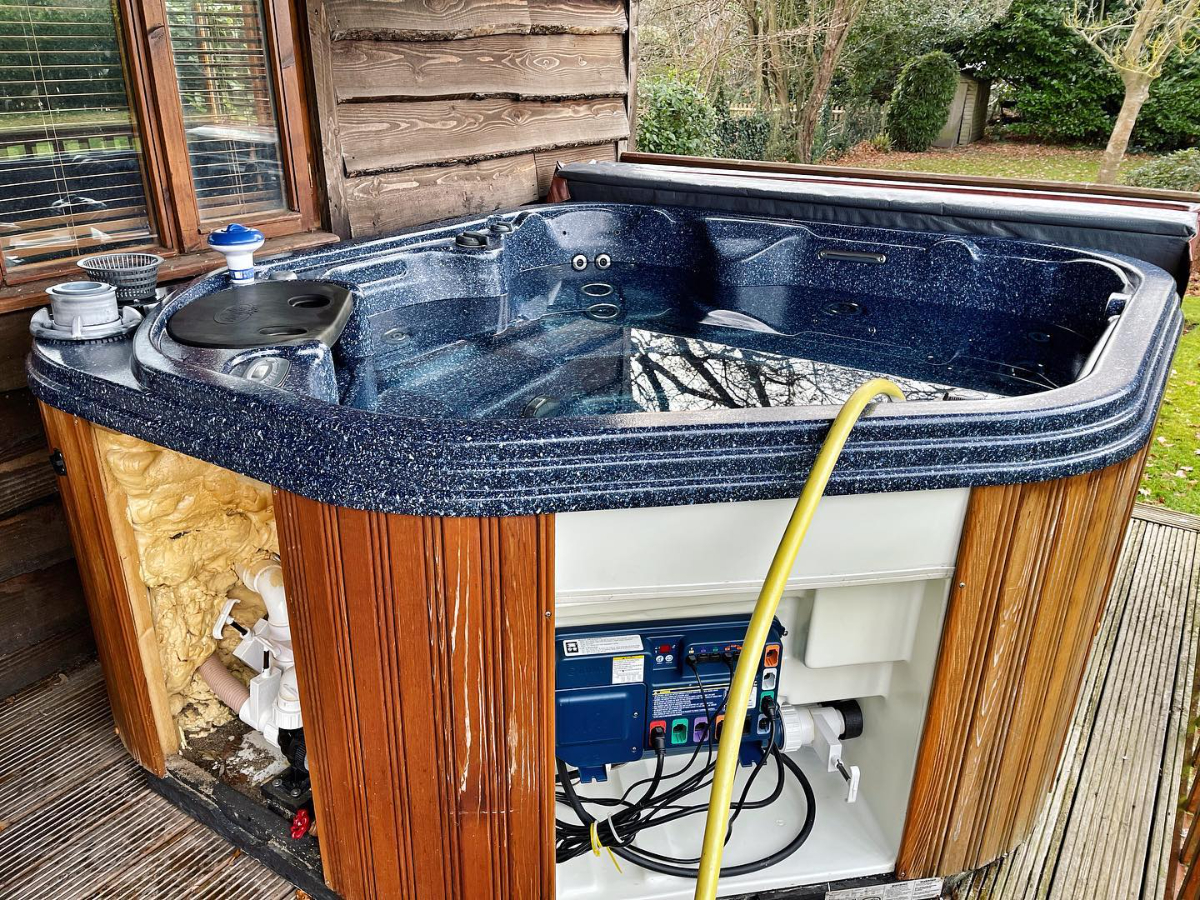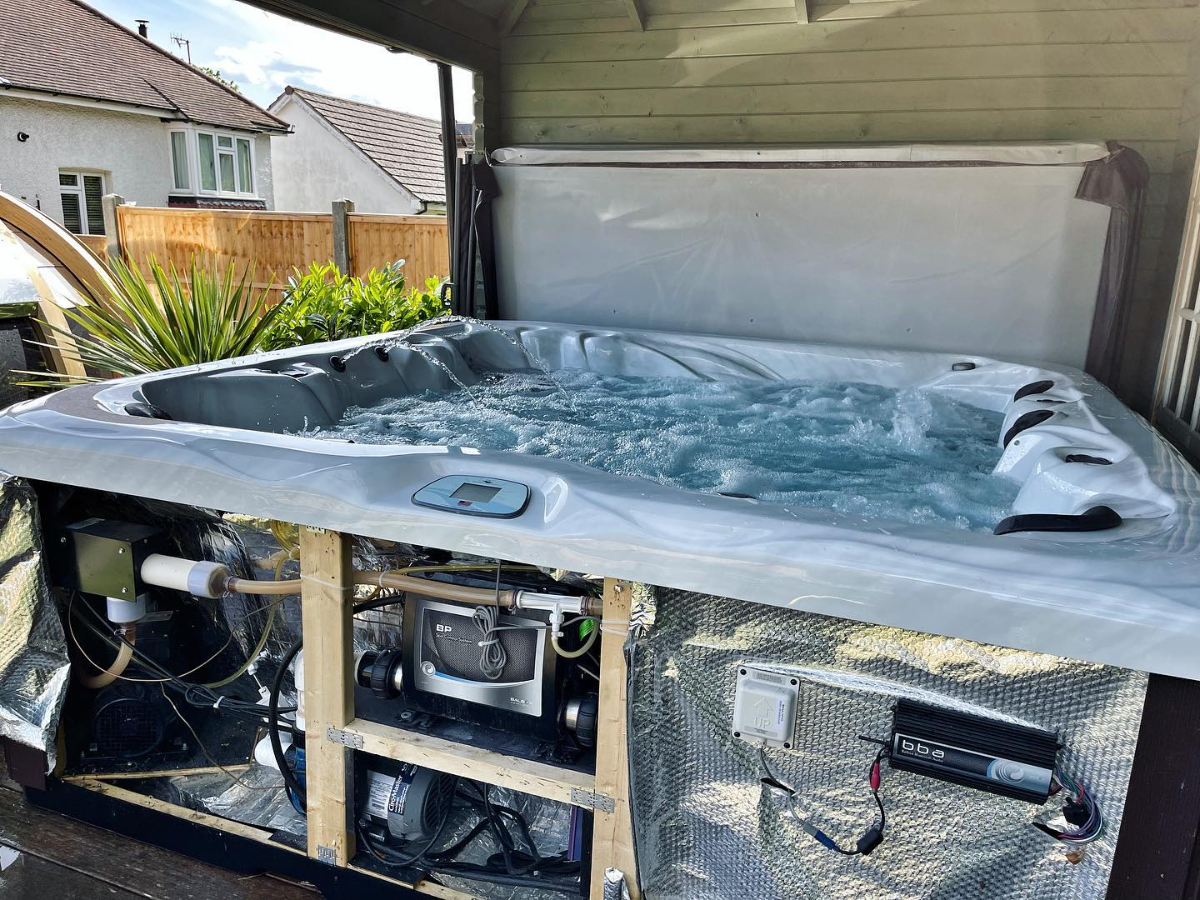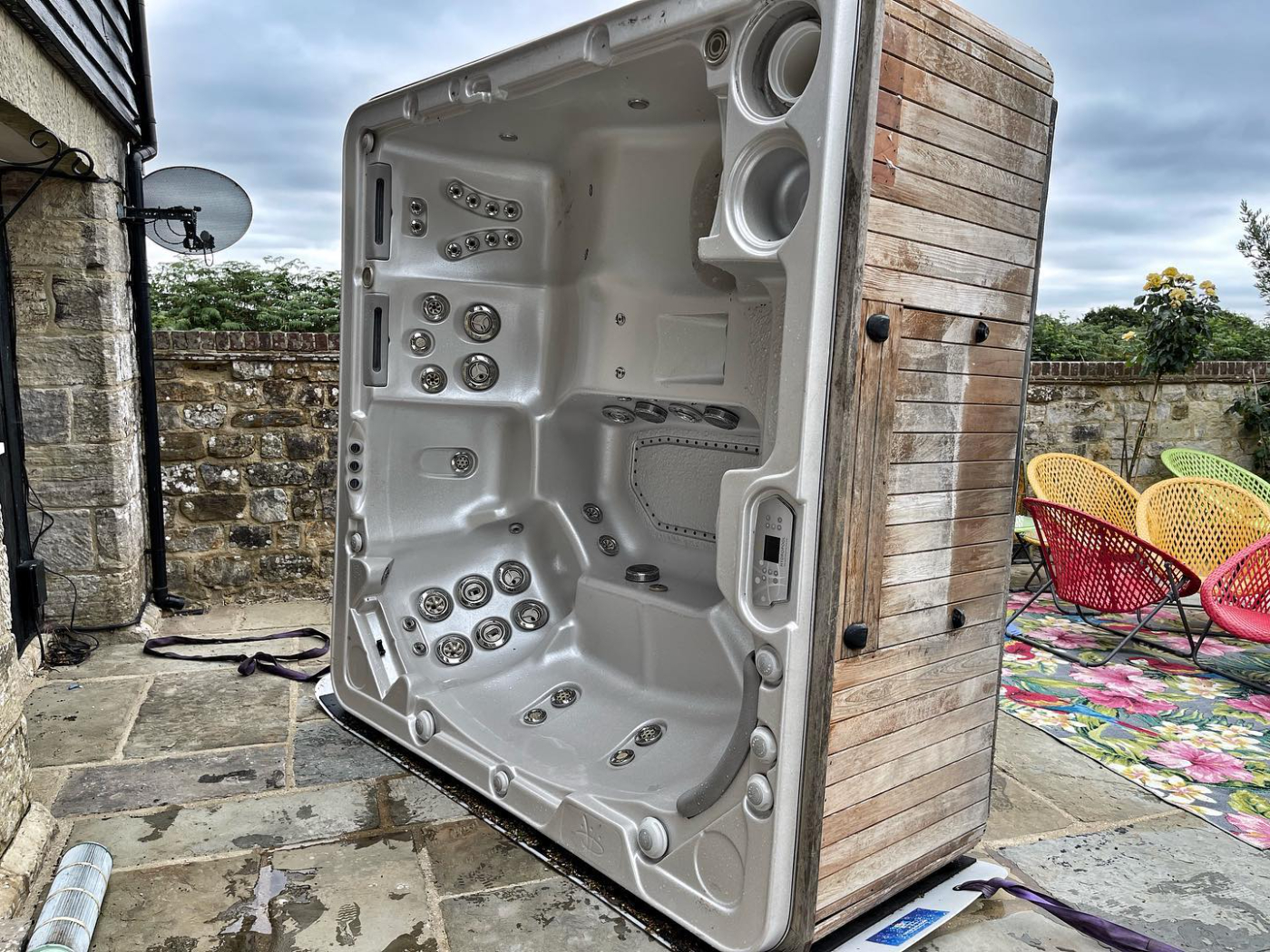Overcome the challenges of moving a hot tub with our step-by-step guide. Discover why size, weight, and delicate parts make it tricky but manageable.
Why Moving a Hot Tub is Difficult
Moving a hot tub can be trickier than people think. Many hot tubs are large and heavy, making it challenging to lift and carry. Even if you have a group of strong helpers, moving this bulky item takes careful planning. One big reason it is difficult is the shape of the hot tub. It is usually round or square with deep sides, which can be awkward to get through tight spaces or around corners.
The smooth, slippery surface can also be hard to grip. Another issue is the delicate parts inside the hot tub. There are pumps, hoses, and electronic pieces that must be protected. If these parts get bumped or damaged, the hot tub may not work properly afterwards. This makes it important to plan how to shield these areas from harm.
Timing is also a concern. Draining and cleaning a hot tub can take a while before it is ready to move. Once it is prepared, the hot tub must be handled with great care. Even a small slip can cause serious damage. For these reasons, moving a hot tub is always a challenge. It might look simpler than shifting other furniture, but the weight, shape, and delicate parts still make it very much harder than it seems at first glance.
Weight and Size: Handling a Bulky Item
Heavy Load
One of the biggest challenges when moving a hot tub is its weight. Hot tubs are made from tough materials like fibreglass and acrylic. Even an empty tub can be heavy, making lifting risky if not done carefully.
Injuries can happen, it is wise to have several helpers or hire professionals. Using proper lifting techniques and working as a team can prevent accidents.
Awkward Dimensions
Besides being heavy, hot tubs often come in shapes and sizes that are hard to move. Some are long or tall, making it difficult to fit them through doorways or gates.
Cornering with such a large item can lead to damage if you are not careful. It is important to measure the tub and all the spaces you plan to move it through.
Otherwise, you might scrape the tub or get stuck midway. In certain cases, you may need to remove gates or doors to create enough room.
Proper Equipment
To manage both weight and size, special gear can help. Dollies, furniture sliders, and sturdy straps make guiding the hot tub smoother. This reduces the risk of accidents, on uneven surfaces like lawns.
Having the right tools can save time and effort. Some people also use ramps or boards to create a flat path over steps or bumps.
Teamwork CountsAwkward Dimensions
Good communication matters when moving a bulky hot tub. Everyone should know when to lift, pause, or change direction. If someone rushes or pulls too hard, the tub might tilt or hit a corner.
By talking to each other, you keep the hot tub steady and avoid mishaps.
Preparing Before You Lift
Always drain the hot tub fully, so there is no extra water adding weight. Remove any loose parts, such as filters or covers. If there are extra pieces like steps, take those off too. Planning ahead, using the right equipment, and clearing obstacles will help you manage the tub’s bulk without too much trouble.

Navigating Tight Spaces and Obstacles
Moving a hot tub often means dealing with narrow hallways, small doorways, or outdoor paths with trees and fences. When you face these tight spots, the risk of knocking the hot tub against something rises. This could leave scratches or cracks on the tub’s surface. Also, it might harm your surroundings, like denting a wall.
One good way to manage tight spaces is to plan your route. Walk through each step before you start moving the tub, checking for anything that could block your path. Move garden furniture, or any loose items that might get in the way. If possible, remove doors from their hinges to open up more space. Sometimes, lifting the hot tub at a slight angle can help it fit through a tricky corner, but this should be done cautiously.
Obstacles like steps or uneven ground add more challenges. You might need sturdy ramps or boards to create a flatter surface. Be sure to move slowly over bumps, so the hot tub does not tip or shift. Extra hands can help guide it safely. With a careful plan, patience, and enough helpers, you can navigate tight areas without causing damage to your hot tub or your home. In narrow areas, tilting the tub and watching each side can make a big difference.
transporting the Hot Tub Without Causing Structural Issues
Keeping a hot tub in good shape during a move is not just about completely avoiding scratches on the outside. The inner parts must also stay safe. Hot tubs have important features like jets, pumps. If these parts shift or break, the hot tub may not work properly later.
One key step is to make sure the tub is balanced. When loading it onto a trailer or truck, place it so that no side is tilting too much. A wobbly ride can strain the tub’s frame and loosen parts inside. Use strong straps or ropes to secure the hot tub firmly. This stops it from sliding around whenever the vehicle turns, speeds up, or slows down.
Vibrations during travel can also cause trouble. Going over bumpy roads might shake the tub and harm its internal parts. Driving slowly, on uneven or rocky terrain, helps reduce jolts. Some people add cushioning material under the tub for extra protection. Foam or moving blankets can help soak up shocks and protect delicate sections.
Finally, check all the tub’s components before and after the journey. Look for cracks or loose parts, and tighten anything that has shifted. By securing the hot tub well and driving with care, you can greatly lower the chance of structural damage.

Reinstallation Challenges: Setting Up in a New Location
Site Preparation
When placing a hot tub in a new spot, the ground must be strong and level. If your spot is uneven, the tub can wobble. A firm base, like a concrete slab or wooden deck, can keep everything steady. Some add extra support if the soil is soft. It helps prevent sinking and damage. Always leave enough room for maintenance and safe entry.
Hooking Up Utilities
A hot tub needs both power and water to work properly. Many hot tubs require a dedicated electrical line with the correct voltage. If the wiring is done incorrectly, it can cause problems or even be dangerous. It is often best to hire a qualified electrician to handle this job. The water supply must also be easy to reach. You may have to run a hose from an outdoor tap, or make sure the tub is near a water source. Careful planning prevents leaks or drips that could damage the tub.
Testing the Water
Once everything is hooked up, it is time to fill the tub and test the water. The chemicals in a hot tub must be balanced to keep it clean and safe. If you add too much or too little, the water can irritate skin or allow germs to grow. Use a test kit to check pH and sanitiser levels. Adjust them according to the manufacturer’s guidelines. It might take a bit of practice to get it right, but once you do, you will have clear, inviting water.
Ongoing Maintenance
After reinstallation, you must keep an eye on your hot tub’s filters, pumps, and water quality. Regular cleaning helps prevent build-up and keeps everything running smoothly. If you notice odd noises or reduced water flow, it might be time for a check-up. By following these steps and staying watchful, you will enjoy your hot tub’s new home without too many problems.
At The Hot Tub Engineer, I provide expert-level hot tub relocation in and around Maidstone, Kent. I can carry out yearly servicing appointments, as well as cleaning sessions, general maintenance, installations, and more.


